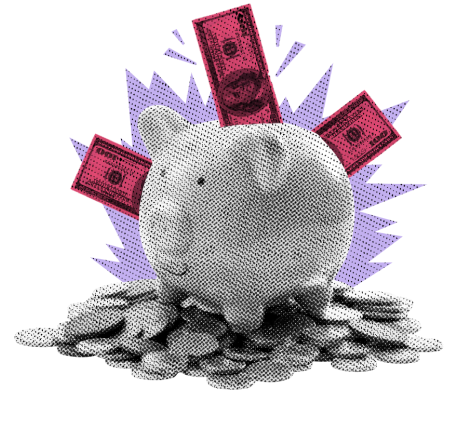Stocks erase earlier losses in favor of gains in the wake of the FOMC minutes release which revealed…nothing new. Job openings are still aplenty according to the latest data from the Bureau of Labor Statistics.
We know, we know. Still confused over why stocks are rallying? Isn’t a recession coming? Ok, let’s get that out of the way straight off. There is nothing that points to even a good chance that a recession is coming…right now. At this very moment, the country’s top investment banks, on median, believe that the probability of a recession in the next 12 months is 33.0%. If you have been following my notes carefully, you would know that that probability has, for the most part, been pegged right around there for some time. There are many quotes lampooning the inaccuracy of economists’ predictions, but one that stands out is “an economist is an expert who will know tomorrow why the things he predicted yesterday didn’t happen today.” Read it over again if you missed the humor the first time around. So, the message is, most economists believe that an imminent recession is not probable, but that can change.
Yesterday morning, traders hit the ground feeling blue and seeing red. Inflation is not showing any material signs of a let up and there are some signs that consumers are either pulling back slightly or losing confidence. High inflation and slow economic growth, AKA stagflation, is not good and it harkens back to the 1970s, which may have been fun for most of us in retrospect, but they were certainly not fun for stock investors. High inflation, high interest rates, and 2 recessions left stocks with only a gain of some +15%. It was a volatile +15% as well with 3 out of the ten years turning in sizable pullbacks. So, it is no wonder that many investors are on edge these days. But what if inflation starts to moderate? What if economic growth continues, but at a slightly slower pace? What if the Fed slows down its signaled rate hikes, or better yet, stops them altogether? These are all possibilities as well, and they have served as motivation for the sparse, but growing, heard of bulls that has been bristling to regain control of the market.
That scenario, known as a soft landing, involves consumers pulling back without completely breaking and prices moderating just enough to get everyone, including the Fed, back to their comfort zones. Another similar scenario involves economic growth slowing by just enough to scare the Fed into slowing down its rate hiking pace, while prices begin to moderate over time as supply chain problems ease and consumer demand slows. In the past several sessions, the collective feeling in the markets appears to be somewhere between those two scenarios. In either of those cases, the economy slows, but why is that resulting in the positive movement of equities? Well, expectations of a slowing economy has brought longer-maturity bond yields down. If you recall, the theoretical value of stocks is inversely tied to yields – as they go higher, the current value of future returns goes lower, and vice versa. Growth stocks are particularly sensitive to interest rates as much of their value is in the future growth of earnings. Recently, we witnessed 10-year Treasury Note yields fall from a high of nearly 3.5% to below 3% clearing the way for growth stocks to recover somewhat. Additionally, tech and growth stocks were relatively oversold giving traders a bit more confidence. If the Fed slows hiking, halts hiking, or cuts rates, it will only add further fuel to the rally in growth, and with the economy flashing some warning signals, those probabilities are on the rise.
There was no such mention of that in yesterday’s FOMC minutes release. In fact, those minutes reveal a Fed that is quite committed to restrictive monetary policy with little concern of slowing economic growth. Nothing was mentioned about the fear of recession, nor were there any mentions of inflation slowing down. No, the notes reflected zealous inflation fighting. The good news, if you could call it that, is that we already knew all of that, which is why markets ultimately rallied into the close. Interestingly the notion of recession and a softer Fed has only emerged in the few short weeks since the last FOMC meeting. We know that the Fed is watching carefully and that it would change its hiking trajectory if things change, and some things have, indeed, changed. Some weak consumer confidence numbers and an inverted yield curve, just to name 2 developments, will have to be factored in by Fed officials in their next meeting. Additionally, next Wednesday’s Consumer Price Index release will have to be considered. At the moment, economists are expecting it to come in at +8.8%, higher than last month’s already hot reading of +8.6%. Regarding those expectations…well, you know the thing about those economists and their predictions.
YESTERDAY’S MARKETS
Stocks started on a weak foot in yesterday’s session, but they ultimately rose into the close after FOMC meeting notes were in line with existing expectations…so, nothing new was learned. The S&P500 rose by +0.36%, the Dow Jones Industrial Average gained +0.23%, the Nasdaq Composite Index climbed by +0.35%, and the Russell 2000 Index slipped by -0.79%. Bonds pulled back and 10-year Treasury Note yields gained +12 basis points to 2.92%. Cryptos climbed by +0.20% and Bitcoin gave up -0.30%.
NXT UP
- Initial Jobless Claims (July 2) is expected to come in at 230k, slightly lower than last week’s +231k claims.
- Fed speakers: Waller and Bullard will both speak today.
.png)

